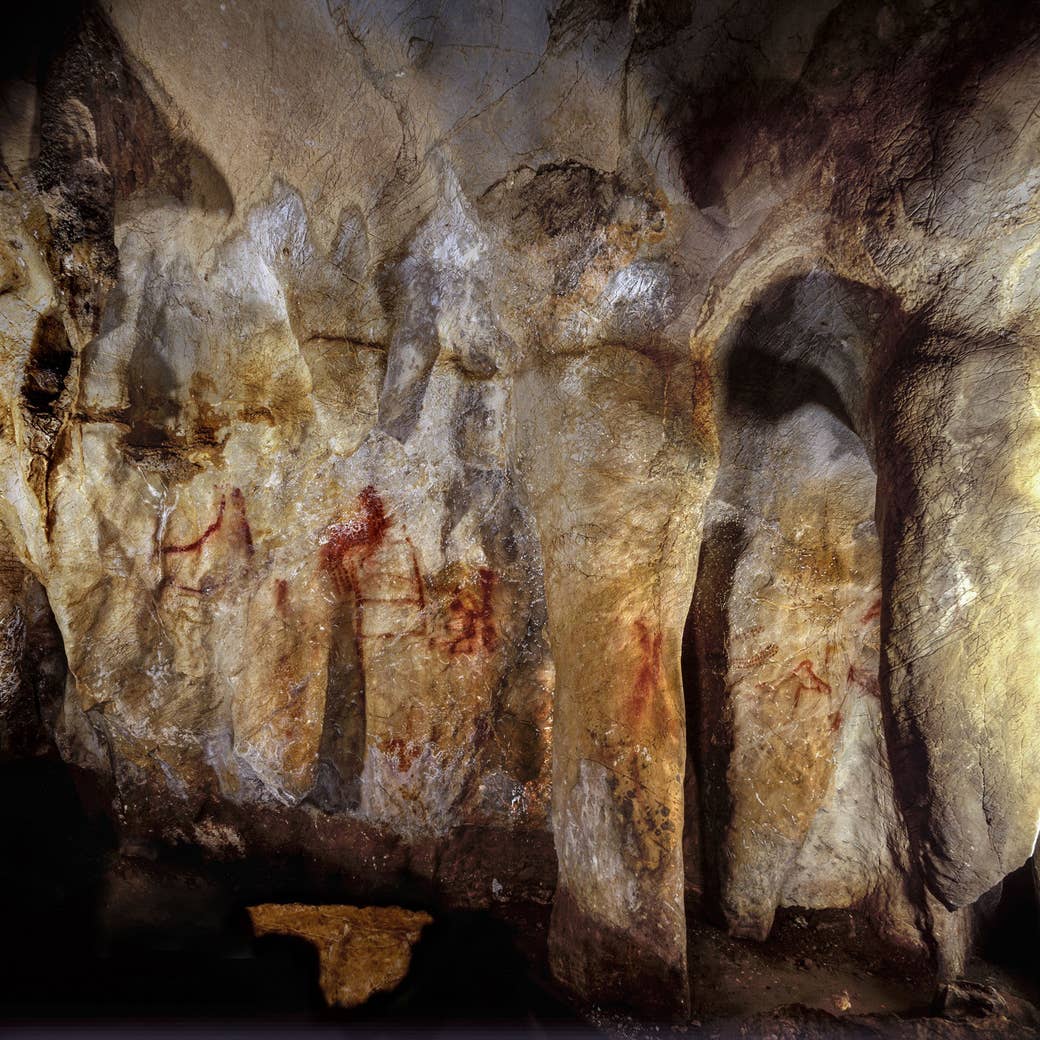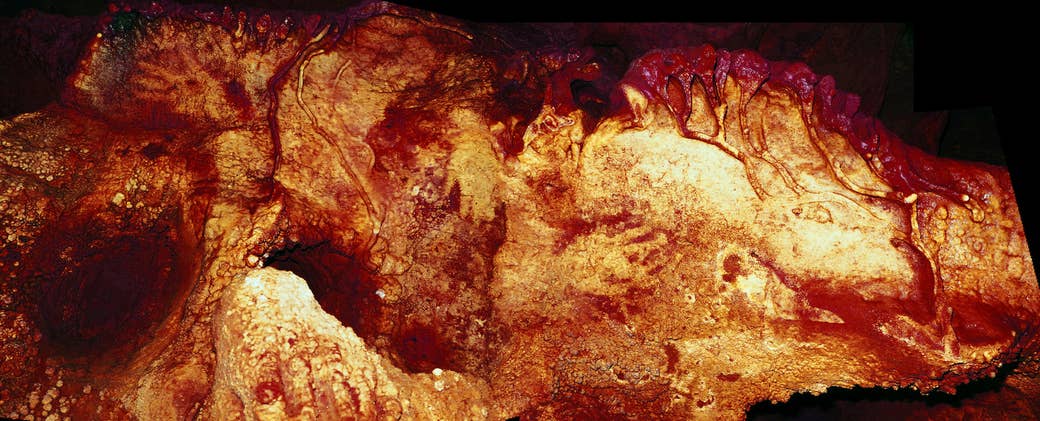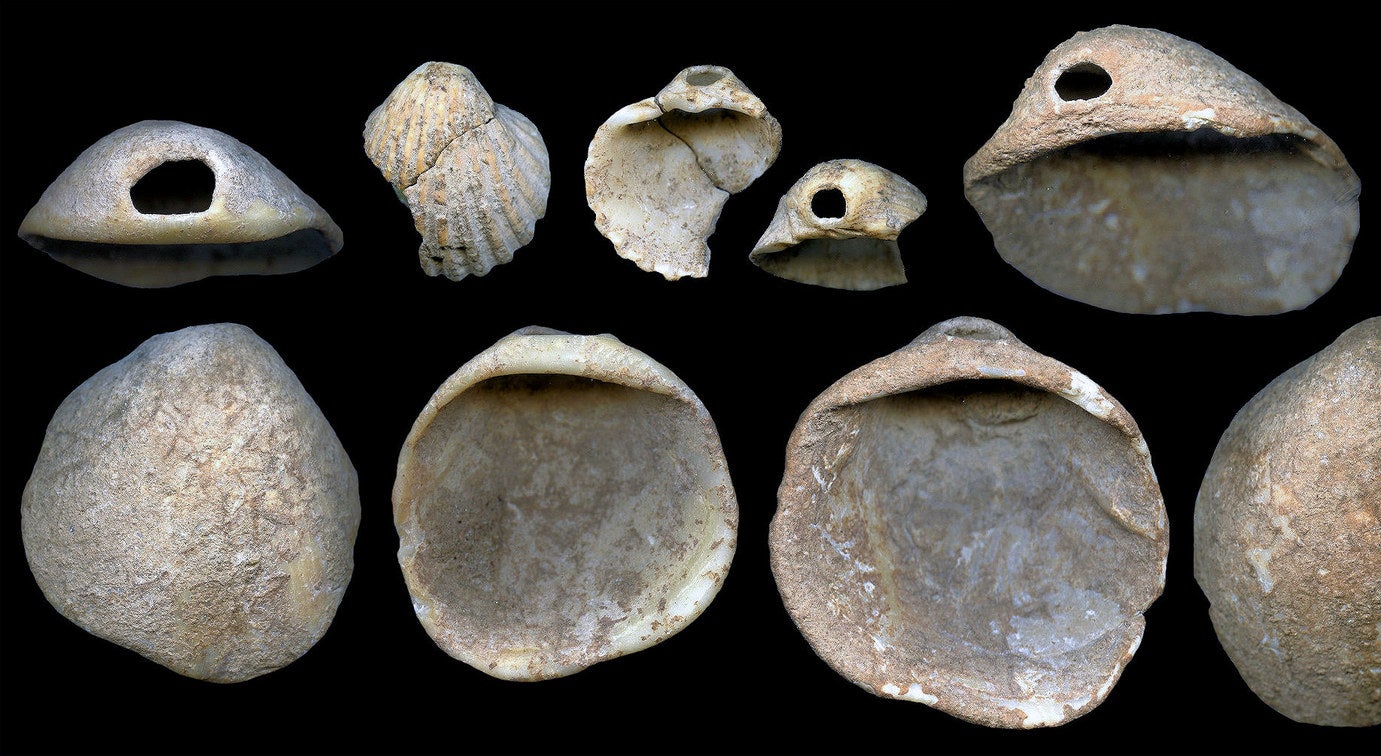
Famous Spanish cave paintings are at least 65,000 years old, scientists reported on Thursday, suggesting that an extinct branch of humanity — our vanished cousins, the Neanderthals — created the world’s oldest art.
Art is seen as an indicator of symbolic thought and language, long believed unique to modern humans. But along with even older dyed and pierced shell ornaments that date to more than 115,000 years ago, the cave paintings suggest that Neanderthals spoke and thought like modern humans.
“The wider significance of our research is to finally put to bed the sense that Neanderthals were very different from us,” study coauthor Alistair Pike of the University of Southampton told BuzzFeed News.
An “archaic” human species that branched from the modern human family tree 400,000 years ago, Neanderthals were marked by a thick brow and rounded, stumpy thigh bones, along with brains as large as ours. Often depicted as clumsy and brutish, Neanderthals mysteriously vanished from Europe and Asia about 40,000 years ago, their retreat coinciding with the arrival of Homo sapiens.
The Neanderthals left behind small genetic traces in some modern people, evidence of ancient interbreeding, and a lot of questions about whether more clever modern humans had bumped them off.

In the new studies, published by the journals Science and Science Advances, a research team led by Dirk Hoffman of the Max Planck Institute for Evolutionary Anthropology tested the ages of pigments on the walls of three Spanish caves, called La Pasiega, Maltravieso, and Ardales.
The caves were already well known for prehistoric animal paintings, hand stencils, and symbolic art — patterns of lines, clubs, and dots — all done in red and black pigments. A new dating method tested the age of the stone underneath the pigments and “flowstone” on top, the team reported, better pinpointing the time the paintings were created.
The cave art is at least 64,800 years old, the scientists found, predating the arrival of modern humans in Spain by at least 20,000 years. That means the artists had to be the Neanderthals. Similar cave art in other caves in Europe might have also been made by Neanderthal artists, the team suggested.
In a separate Spanish sea cave called Cueva de los Aviones, the scientists reported, the pierced and dyed shells also date to about 115,000 years ago. The oldest similar such ornaments from early modern human sites in Africa date to about 80,000 years ago.

Independent scientists told BuzzFeed News the dating team is well regarded, but expressed caution after only one set of results.
“If true, this rewrites our understanding of the time-depth and capability of the humans that made it,” ancient dating expert Thomas Higham of the University of Oxford told BuzzFeed News. “What is now needed is a wide-ranging analysis of other cave art.”
Early human archaeologist Joseba Ríos Garaizar of Spain’s National Research Center on Human Evolution was more skeptical, pointing out that similar looking art in the caves is definitely dated to the more recent era of modern humans.
That means the study results might just be anomalies. “For me it wouldn't be surprising to find rock art made by neandertals, but unfortunately I'm not fully convinced,” Ríos Garaizar told BuzzFeed News by email.
All the same, he added, scholars already have evidence that Neanderthals thought in symbolic fashion, seen in rock patterns made in deep caves reported in 2016.
Pike, the study coauthor, suggested the commonality of red pigmented cave art and decorative shells might point to even older art created by humanity’s ancestors.
“It remains to be seen just how far back the evidence for symbolic behavior goes,” he said, “but we might want to start looking at the ancestor species of both modern humans and Neanderthals perhaps 500,000 years ago.”

